So, you’ve decided to study abroad. That’s a great idea because a higher education degree from a prestigious Western university almost guarantees a well-paying job.
Nevertheless, studying overseas may not be as easy and straightforward as you might think. The Western education system has unique features, and each country follows its own academic structure. Before you start choosing an institution, you should research the education system of the destination country.
From this guide, you’ll learn what Western education is and discover its characteristics.
🔑 Western Education: Key Features
Before we tell you about the education systems of the top 5 most popular countries among international students, let’s learn about the main features of Western universities and the difference between Eastern and Western education:
Active student participation
Perhaps, the first thing international students notice is that they have to participate in class activities.
Yes, instead of the usual passive learning, you will have to take part in debates, carry out group projects and make presentations. The Western education system is student-oriented, developing such qualities as critical thinking, problem-solving skills, and generating new ideas.
Conversely, the key focus in the Eastern education system is the teacher. They plan all the activities while students are only required to memorize the program material. The emphasis on independent research is found only in postgraduate and doctoral studies.

Independent learning
The process of education is also different between Western and Eastern higher education systems.
The main task of American or European education is to teach a student how to acquire knowledge independently. The teacher acts as a facilitator in the world of knowledge, guiding and helping students. Each student is responsible for their learning process.
In contrast, Eastern education is based on the imperative teaching method. Students receive most of their knowledge directly from the teacher, remaining mostly just observers.
Study to understand, not memorize
When we talk about the learning approach, you will also see fundamental differences.
The main task of a Chinese or Russian student is to learn study materials and then demonstrate the knowledge gained via an exam. Such an approach often leads to gaining superficial knowledge that is forgotten in a short time after the completion of the course. In reality, the priority for students is getting a diploma, rather than deep learning of fundamental knowledge and skills.
The Western education system, on the contrary, is focused on the student’s motivation to search for new information, generate questions and formulate ideas. Even mistakes make it possible to get a better understanding of the problem. Students are interested in acquiring the essence of the subject, rather than memorizing a selection of numbers and facts.
Motivation and student-teacher relationships
In the educational environment of Western countries, a democratic style of teacher-student relations is encouraged. The goal is that students can easily enter into discussions and debates with the teacher, thus gaining new knowledge in the process of such communication.
The Eastern education system is mainly built around authoritarian teacher-student relations. The professor’s opinion is undeniable, and, in most cases, discussions are simply not conducted. As for evaluation and promotion, the focus is on errors. It is believed that a critical attitude towards mistakes motivates one to study harder.
So, you’ve learned about the main differences between Eastern and Western education systems. If you want to further explore this topic, head over to the IvyPanda essays database to find a selection of works with relevant info. Now, let’s find out more about studying in the most popular countries among international students: USA, Australia, United Kingdom, Canada, and New Zealand.
🗽 American Education System
American higher education includes three educational levels: undergraduate, graduate, and postgraduate.
Obtaining a bachelor’s degree gives you the right to apply for employment in your chosen specialty. A master’s degree is mainly focused on the deepening of knowledge, and a PhD diploma provides an opportunity for teaching and conducting research.
Want to know more?
Just keep reading! Below we will describe the key features of American education:
1. Admissions
Undergraduate admission requires completion of secondary education, TOEFL or IELTS language tests, as well as standardized SAT or ACT exams.
To apply for a master’s degree, a student has to provide a bachelor’s diploma as well as TOEFL or IELTS. International students can submit a bachelor’s diploma issued in their home country.
Speaking of postgraduate studies in the United States, you should know that a bachelor’s degree is enough for admission. You don’t have to obtain a master’s prior to your PhD. For example, at Carnegie Mellon University, you receive a master’s degree during your PhD studies.
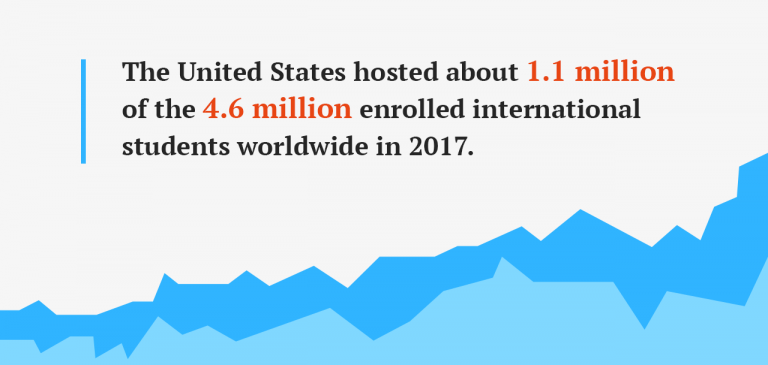
2. Choosing a specialization
American higher education has strict standards regarding specializations. Each university has a list of subjects, some of which are mandatory, while others are electives. For example, at Oregon State University, the first two years of the BS Entrepreneurship program are devoted to the basic disciplines, mandatory for all areas of undergraduate study. Most of the courses related to the “entrepreneurship” specialization, students take in the third and fourth year.
There are two main types of master’s programs: professional and academic. These programs are aimed at deepening education in graduate school and subsequent research activities. In the second case, participation in scientific research is essential.
3. Curriculum at American universities and colleges
Studying at American colleges requires a lot more autonomy from students. In fact, training in American universities is carried out according to individual plans. To obtain a bachelor’s degree, you must get a certain number of credits. One course is usually worth three to six credits.
Getting a master’s degree can take up to two years. The learning approach is similar to undergraduate, but the complexity and intensity of study are much higher. Individual responsibility and independent learning also increase. To complete the master’s program, a student may need to submit a master’s thesis.
The third and last stage of American graduate education is a doctoral degree. This choice is made by those who would like to become a scientist or a teacher. The duration of studies varies from four to six years. In the end, a student acquires the degree of Doctor of Philosophy (PhD) or Doctor of Science (ScD).

4. US universities and colleges
The system of institutions of higher education in the US is different from Chinese or Russian.
Colleges tend to specialize in a two-year vocational education or offer a variety of four-year undergraduate degree programs.
Universities, in contrast to colleges, provide training in the educational levels of bachelor, master, as well as specialize in postgraduate education and conduct research studies. The university structure typically includes one or more colleges, business schools, research and business centers, and so on.
Public universities (for example, the University of Michigan) are directly under the jurisdiction of the state. The cost of education is lower than at private universities, and the number of students is much higher.
Private universities and colleges, as a rule, have a less extensive structure than state institutions. Nevertheless, the quality of education is still high. For example, Stanford University is in the top 10 best universities in the world according to QS University Rankings.
5. Grades and GPA
Grades in the US are formed by the results of a combination of written assignments and projects, in-class activity and exams completed by the student during a semester or quarter.
The grading system is five-point, alphabetic: A, B, C, D, F, where A is the highest level of knowledge at five points, and F is the complete lack of knowledge at zero points.
The average score, GPA (Grade Point Average), is calculated as a numerical value. You can find out more about GPA in this IvyPanda article.
🐨 Higher Education in Australia
The next country we will consider in this article is Australia. And the IvyPanda experts prepared a list of key points of their education system:
1. Vocational colleges
TAFE (Technical and Further Education) vocational colleges and institutes provide training for students according to the Australian Qualification Framework (AQF).
Their graduates, depending on the chosen curriculum, receive certificates of I–IV levels, diploma, or bachelor’s degree.
Many TAFE colleges have partnerships with universities that provide virtually guaranteed admission to the university without taking additional courses.
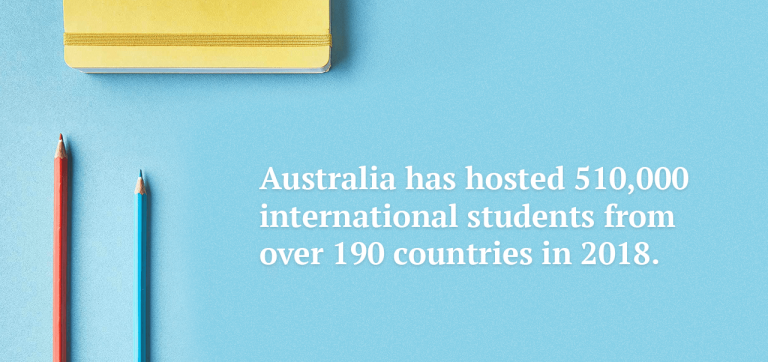
2. Australian universities
As for universities, there are only 43 universities in Australia, 40 of which are public. Similar to the United States, universities offer bachelor, master and doctoral programs.
Education in universities in Australia, as a rule, is more focused on theoretical and scientific training, in contrast to the TAFE institutes.
3. Learning program
The duration of studies at TAFE colleges ranges from four months to two years for certification programs, from 18 months to three years for degree programs.
Education at the undergraduate level lasts three years. Students can also choose an in-depth four-year program. Some Australian universities provide an opportunity to get a double degree.
A master’s degree in Australia involves studying for one or two years, depending on the chosen program.
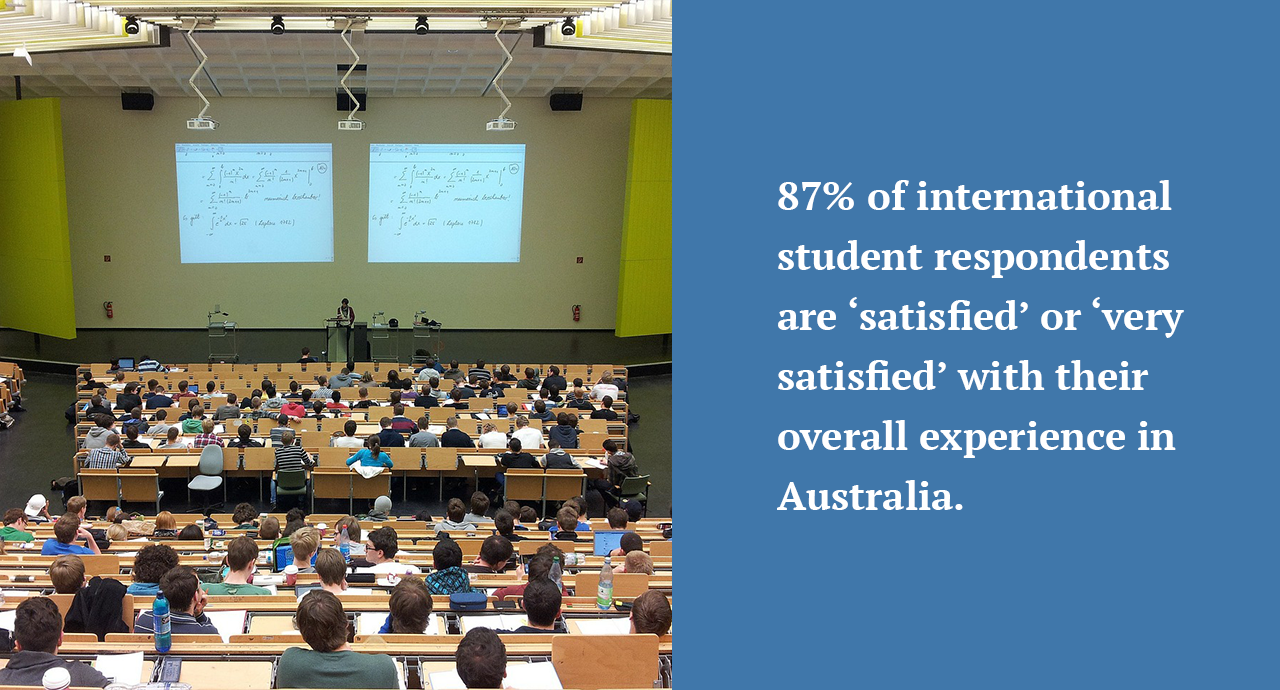
4. The grading system in Australia
Grading systems at Australian universities differ from institution to institution. Most of them use letter grades, while Griffith and
Queensland universities use numerical marks.
There are two common letter grading systems:
- HD (High Distinction), D (Distinction), C (Credit), P (Pass), F or N (Fail), where HD is the highest score, and F, N, AF, MF, F1, and F2 are unsatisfactory marks.
- A +, A, B, C, D — evaluation system based on the American grading model.
🌁 Study Abroad: British Education
The British higher education system is one of the oldest. For example, the University of Oxford boasts nearly a thousand-year history.
The UK is among the most popular destination countries for international students. And, although it has a lot in common with other English-speaking countries, there are also some features you should know:
1. Colleges of Further Education
Like the Australian TAFE colleges, British further education colleges provide professional training in a variety of fields: accounting, insurance, textiles, and so on. Upon completion, Foundation Degree, HNC, HND, or PGCE qualifications are awarded.
Obtaining such a qualification allows a graduate to qualify for membership in professional associations and employment.
2. Universities and degrees
The UK educational system is not too different from other countries. Students can earn a bachelor’s or master’s degree.
Education level names may vary by university. For example, in universities in Scotland, the Master of Arts (MA) is the first educational degree in the humanities, instead of the usual Bachelor of Arts (BA). Cambridge does not provide a Bachelor of Science (BSc) qualification, while BSc is the highest degree at Oxford.
The term for a bachelor’s degree program is usually three or four years. However, for certain specialties, you will have to study up to seven years to obtain the appropriate diploma.
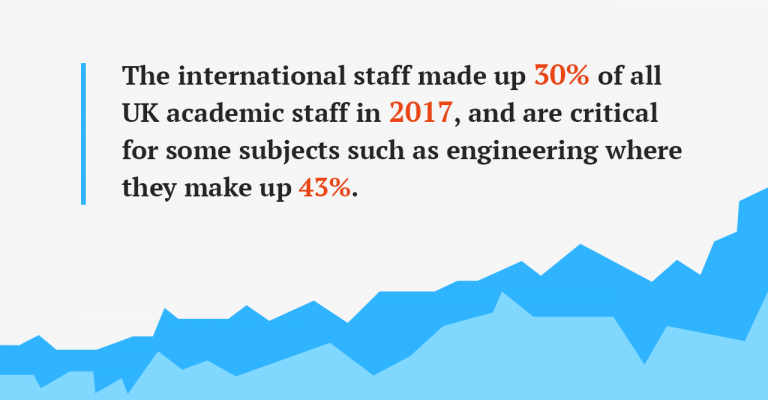
3. Postgraduate education
Postgraduate education in the UK involves theoretical and research programs.
Theoretical studies last one or two years and end with obtaining a diploma, certificate or master’s degree. Assessment of knowledge is carried out on the basis of the written work of the student completed during their studies. Some programs require the writing of a master’s thesis.
Research postgraduate education involves obtaining the degree of Doctor of Philosophy (PhD). Training programs at this level assume that the necessary minimum is given to theoretical training, and most of the time is devoted to research in a particular field. Duration of studies is two years.
To complete their studies, students must publish research papers and write a dissertation.
International students can apply for joint programs of British universities with the university in their homeland. Thus, a student takes a part of the curriculum in the institution of his country, and another part in the UK. Such programs can significantly reduce the cost of studies.
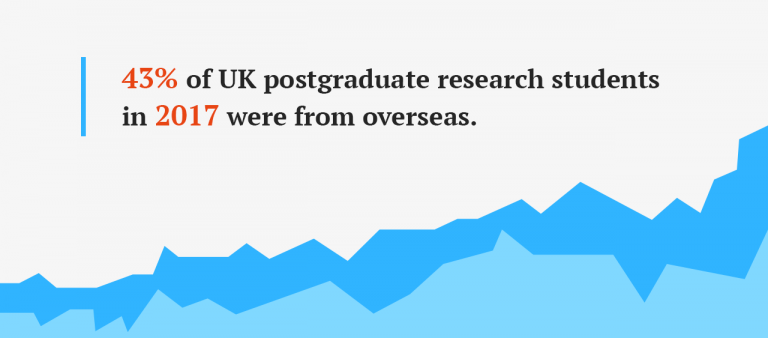
4. Admissions
To enter a UK university, an international student must apply through UCAS.
Entry requirements depend on the chosen program and level of training. For undergraduate studies, you should pass the A-levels exam or provide proof of equivalent qualification. In addition, you have to provide the results of TOEFL, IELTS, CAE or Pearson (Academic) test.
If your qualification does not correspond to A-levels, you can take a preparatory course (Foundation Year).
For admission to the master’s or doctoral studies, you should provide documents of previous education (bachelor’s or master’s degree) and proof of English language proficiency (TOEFL, IELTS, CAE, Pearson). Some universities, depending on the curriculum, additionally require appropriate work experience or published scientific articles.
5. UK grading system
Assessment of knowledge in British universities and colleges is based on a 100-point system. In this case, the same number of points at different universities may mean different grades.
However, most universities adhere to the traditional grading scale:
- 70–100 points — Excellent (First Class Honors classification)
- 60–69 points — Good (Upper Second Class Honors classification)
- 50–59 points — Good (Lower Second Class Honors classification), however, some aspects of the issue are not fully disclosed, a student didn’t use additional sources.
- 40–49 points — Satisfactory (Third Class Honors classification).
- 30–39 points — Unsatisfactory (Referral): the paper does not meet the requirements; the topic is not fully disclosed; the student demonstrates a low level of knowledge.
- 0–29 points — Unsatisfactory (Fail): the student demonstrates a complete lack of knowledge, failed to appear for the exam, or did not pass the required work.
🍁 Higher Education System in Canada
Education in Canada is becoming more and more popular. And it’s not surprising, because the cost of education here is lower than in the US or UK.
Other significant factors that influence the international students’ choice of location is the possibility of immigration and the opportunity of part-time employment immediately after the start of studies.
Canada’s higher education system is widely researched by academics and policymakers because of its accessibility and unique pathways. For international students, this makes Canada not just a study destination but also a potential home after graduation. If you’re planning to get higher education, you can check out Custom-Writing.com, where graduates of Canadian and international institutions can help you at any step, from choosing a college to writing an admission essay.
If you want to acquire higher education in Canada, learn about the features of its education system below:
1. Canadian colleges
Canadian colleges provide vocational education in various fields of study. Students may pass the practical training or complete paid internships. College types vary by study duration and learning profiles:
- Two-year and four-year colleges. Students in a two-year college receive certificates or associate diplomas. Such a diploma gives the right to work under the obtained qualification. Four-year colleges provide programs that enable students to continue their studies at the undergraduate level.
- Liberal arts colleges. Liberal arts colleges specialize in training in the humanities, such as linguistics, art, history, and so on.
- Professional colleges, for example, Mohawk College, Ontario, specialize in applied training in specific professions. Students are required to complete internships.
Canadian colleges do not award a bachelor’s degree, unlike those in the US. However, some education institutions may offer joint educational programs with universities.

2. Universities in Canada
Canadian universities are large educational institutions providing education at the undergraduate, graduate and postgraduate levels.
The structure of universities includes several colleges, research institutes, laboratories, business incubators, and so on.
Canadian universities have broad autonomy in curriculum development.
3. Admissions
To apply for admission to Canadian colleges and universities, international students should provide a certificate of previous education, translated into English or French. You may also be required to provide an assessment of academic documents to the admissions office.
This consideration of documents is carried out to determine whether education from outside Canada complies with university or college requirements. The assessment is performed by the International Credential Assessment Service of Canada (ICAS, evaluates documents for higher and secondary educational institutions) and World Education Services (WES, evaluates documents only for universities).
It is also obligatory to confirm knowledge of English or French. Depending on the institution, you should provide TOEFL, IELTS or CAEL certificates.
When choosing a specialty, international students should take into account when applying for highly competitive programs that priority is given to Canadian citizens when enrolling.
4. Canadian grading system
At Canadian universities, you will receive letter grades in most cases. However, the point system varies depending on the province:
Alberta
The correspondence of letter grading evaluations in Alberta depends on the university and even on the particular professor. For example, an A+ grade at the Universities of Calgary, Alberta, or SAIT Polytechnic is equivalent to 4.0 points, while at other universities, an A+ grade means 4.3 points.
Also, in some educational institutions, you can find a 9-point grading system, where 9 points is equivalent to an A +, 8 points an A, and so on.
British Columbia
Evaluation in British Columbia is also not unified. A grade of “A” by one faculty member may be equivalent to A+ or A- in another department of the same university.
However, the most common ratio of letter grades and the percentage of material learned is given in the table below:
Manitoba
The Manitoba Assessment System is based on GPA values:
Nova Scotia, Newfoundland and Labrador
Ontario
In Ontario, you can find all forms of evaluation: alphabetic, numeric and percentage estimates.
Quebec and New Brunswick
Saskatchewan
🌅 Study in New Zealand: Higher Education
New Zealand is also one of the most popular destinations for educational tourism. If you are looking for information about the education system of this country, you will find the essential information below:
1. Qualification levels in New Zealand
Educational qualifications are regulated by the New Zealand Qualifications Authority (NZQA).
The NZQA provides the framework of conditions to obtain a certain level and how those levels integrate into the country’s general education system.
There are 10 qualification levels in New Zealand:
- Levels 1–5 involve the acquisition of professional skills and knowledge sufficient to work in the chosen specialty or to continue their studies.
- Levels 6 and 7 also imply obtaining professional certificates or diplomas and provide an opportunity for both work and further education at the undergraduate level.
- Levels 7 and 8 offer the possibility of obtaining a bachelor’s degree. Level 8 implies mandatory participation in research programs, in-depth study of professional disciplines, and successful passing of exams.
- Levels 9 and 10 provide a master’s or PhD degree respectively.
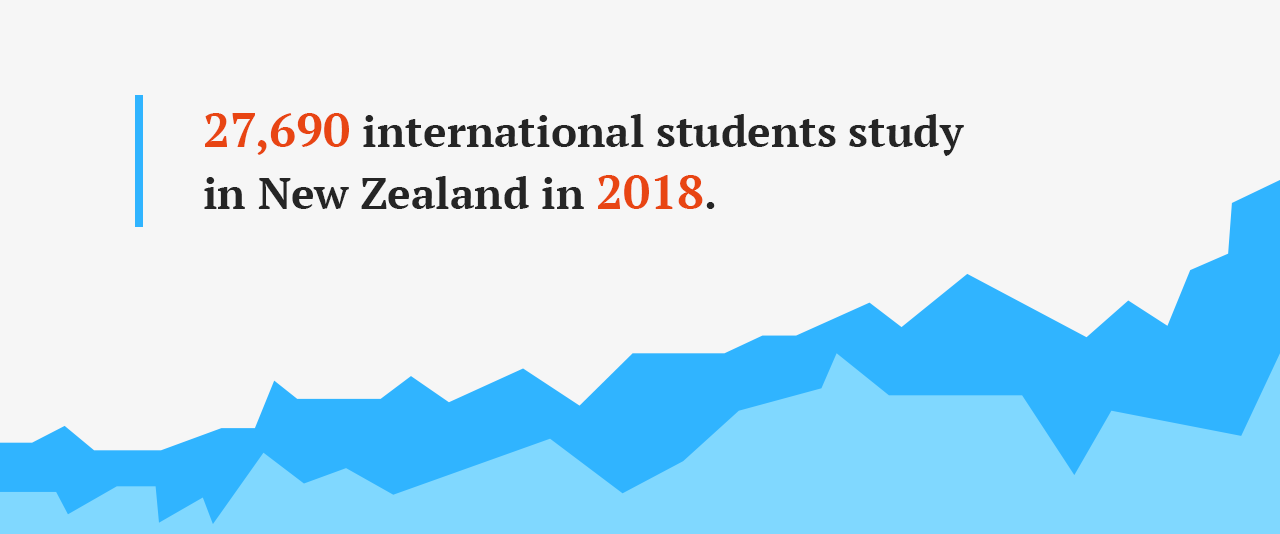
2. Universities, institutes, and private institutions
The structure of higher education in New Zealand is based on the British system. It includes private educational institutions (Private Training Establishments, PTE), technological and polytechnic institutes (Institutes of Technology and Polytechnics, ITP) and universities.
PTE is focused on narrow-profile educational programs, such as restaurant and hotel management, hospitality, and commerce.
Polytechnic institutes offer hands-on vocational training for the most sought-after professions.
Universities, in turn, are focused on academic preparation and research.
3. The educational process and admissions in New Zealand
Unlike most English-speaking countries, the school year for New Zealand’s universities starts in February and ends in mid-November.
Scheduling of courses, as a rule, involves semester education. Nevertheless, there are exceptions: for example, at the University of Victoria (Wellington), the curriculum is divided into trimesters.
To enter New Zealand, international students must provide IELTS or TOEFL certificates, as well as previous education certificates translated into English. The admission deadline varies depending on the institution.
4. Grading system
New Zealand institutions use a point-rating assessment system, taking into account grades for completing assignments, attendance, and participation in in-class activities, as well as exam results during the semester.
As a rule, universities use letter grades, where A (A +, A, A-) is the highest score, and D, E, and F mean “unsatisfactory,” meaning that the student did not acquire sufficient knowledge.
🎓 Career Prospects for Graduates
Education in English-speaking countries gives significant advantages in the future life of international students: from getting a well-paid job at home to immigration to another country.
Let’s look at the prospects for graduates:
1. Employment during and after graduation.
Most countries allow international students to work part-time up to 20 hours a week during the semester and 40 hours a week during holidays.
Thus, foreigners can improve their language skills, establish an additional source of income, and also build their professional network that will be useful in further employment.
Some countries allow you to work after graduation for several months without reissuing a visa. One of the options for a student’s career path is internships in one or more companies and continued employment after graduation. Many companies prefer to hire young professionals who are already familiar with the specifics of their business processes rather than train a new employee from scratch.
In addition, the presence of an American or British diploma increases your chances of employment in large multinational corporations, as well as small companies in your homeland.
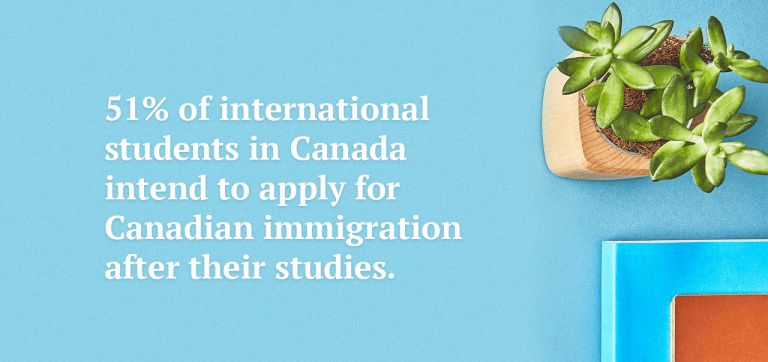
2. The opportunity to immigrate
Canada, Australia, and New Zealand are among the most attractive countries for foreigners.
Why?
It’s simple. You can stay in these countries and even get citizenship. For example, when going to study in Canada, you have the right to work from the beginning of your studies. After graduation, the student has the right to obtain a work permit. Having work experience in Canada from 12 months to two years entitles you to a permanent residence permit.
In addition, a spouse of the student has the right to work full-time.
Similar immigration programs exist in Australia and New Zealand.
So, you learned the differences in the education systems of different countries. And you now have a rough idea of future career prospects. Subscribe to the IvyPanda blog to keep up with the latest educational trends and get useful tips on various aspects of learning that affect you.




Nice post, keep it up….
Thanks for the feedback, Larry! Much appreciated.
Scholarship study
Hi
Pls kindly send updates on scholarship study